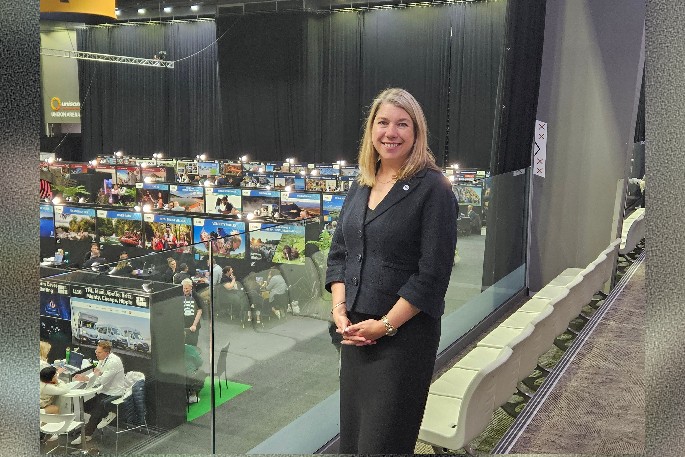This Content Is Only For Subscribers
At TRENZ 2025, Tourism Industry Aotearoa’s (TIA) chief executive Rebecca Ingram has confirmed the industry is tracking steadily and optimistically toward its long-term goals, as laid out in the Tourism 2050 strategy.
With strong motion behind key environmental, social, and economic initiatives, the sector is showing that future-focused tourism can coexist with responsible growth.
“So there are 10 key actions in Tourism 2050, and each of them have got some sub-actions, and so we are tracking consistently well against those sub-actions, so things like making progress on data tick, a workforce scenarios and kind of mapping that I announced today tick.” says Rebecca.
She says this industry-built blueprint is far from being shelved. “Tourism 2050 was written by the industry for the industry, and it is proving to be an incredibly valuable document for helping us track where we want to go,” she says. “We’re looking at it constantly, we have spreadsheets, got graphs in it, we’re constantly seeing how we’re going, and it’s really positive to see the progress. In fact I have to remember to look at it to make sure that I can see just how much progress we’re making, because you know you can get a bit constantly focused on the next thing that needs to be done.”
In areas like predator-free initiatives and workforce planning, Rebecca says there are strong advancements, but she confirms that more support is needed around carbon measurement. “We’ve got a few gaps in carbon, so we’re going to put a focus on that this year to support businesses to be able to measure their carbon a bit better.”
Despite the challenges, the industry is not sacrificing its environmental commitments for the sake of growth. Rebecca says there is a string of recent innovations that are redefining what tourism operations can look like. “They’re doing both,” she says “So what I see consistently across the industry is ongoing, consistent, really positive progress against supply chain management, waste management, you know wanting to really improve the carbon footprint.”
From electric hydrofoiling water taxis to solar farms at regional airports, she says change is happening on multiple fronts. “Fuller’s Ferry has launched this completely amazing water taxi that hydrofoils and is electric. Yeah it’s really cool, there’s amazing videos. I see Air New Zealand making really strong plans and commitments around their own carbon footprint, and aviation is going to be one of the hardest things to evade.”
Rebecca says “I see airports installing solar farms and pushing hard for the sorts of things that we want to achieve, and it makes me very proud. And I feel incredibly optimistic about the difference that we’re making for New Zealand, because each individual business is doing their thing, doing their part.”
She says “For a long time we’ve been tracking community sentiment as an industry. We have something called the Views of New Zealand, and it helps us identify overall sentiment towards tourism, which is very strong. So 94% of New Zealanders think tourism in New Zealand is important and good for New Zealand.”
But it’s not just about approval ratings—real action is being taken to address on-the-ground impacts. “We’ve got to make sure we’re managing congestion, we’re managing litter, we’re thinking really proactively about freedom camping and responsible camping, we’re thinking about how we support visitors to drive safely. And that’s why initiatives like Te Aki Care for New Zealand are really important, because that’s about helping visitors understand what it means to be a great visitor here.”
Te Aki is just one of several actions woven into the 2050 vision that Rebecca believes holds powerful promise. “Te Aki is definitely one of those things in Tourism 2050 where it’s got so much potential. I just had a little bit more money. But we just keep going. It’s really important, and it’s becoming part of the fabric of how we do tourism here.”
Supported by a practical, determined approach to making the strategy a living, breathing document, she says “I look at it constantly. I have a dog-eared version that sits on my desk, and I’m always picking it up. I’m always giving it to my team and being like, how is what we’re doing tracking back to it? Where are we making progress? How are we engaging with different government agencies about it?”
Speaking to recent government engagement as a sign the strategy is gaining traction beyond the sector, she says “A good example is recently the Department of Conservation and Minister Potaka released two pieces of thinking for consultation on access, charging on conservation, and also concessions. And the way in which that was positioned mirrored the language in Tourism 2050. It was about how do we transform conservation and tourism on the estate? How do we modernise it? And it’s really cool to see us as a country having those conversations.”



